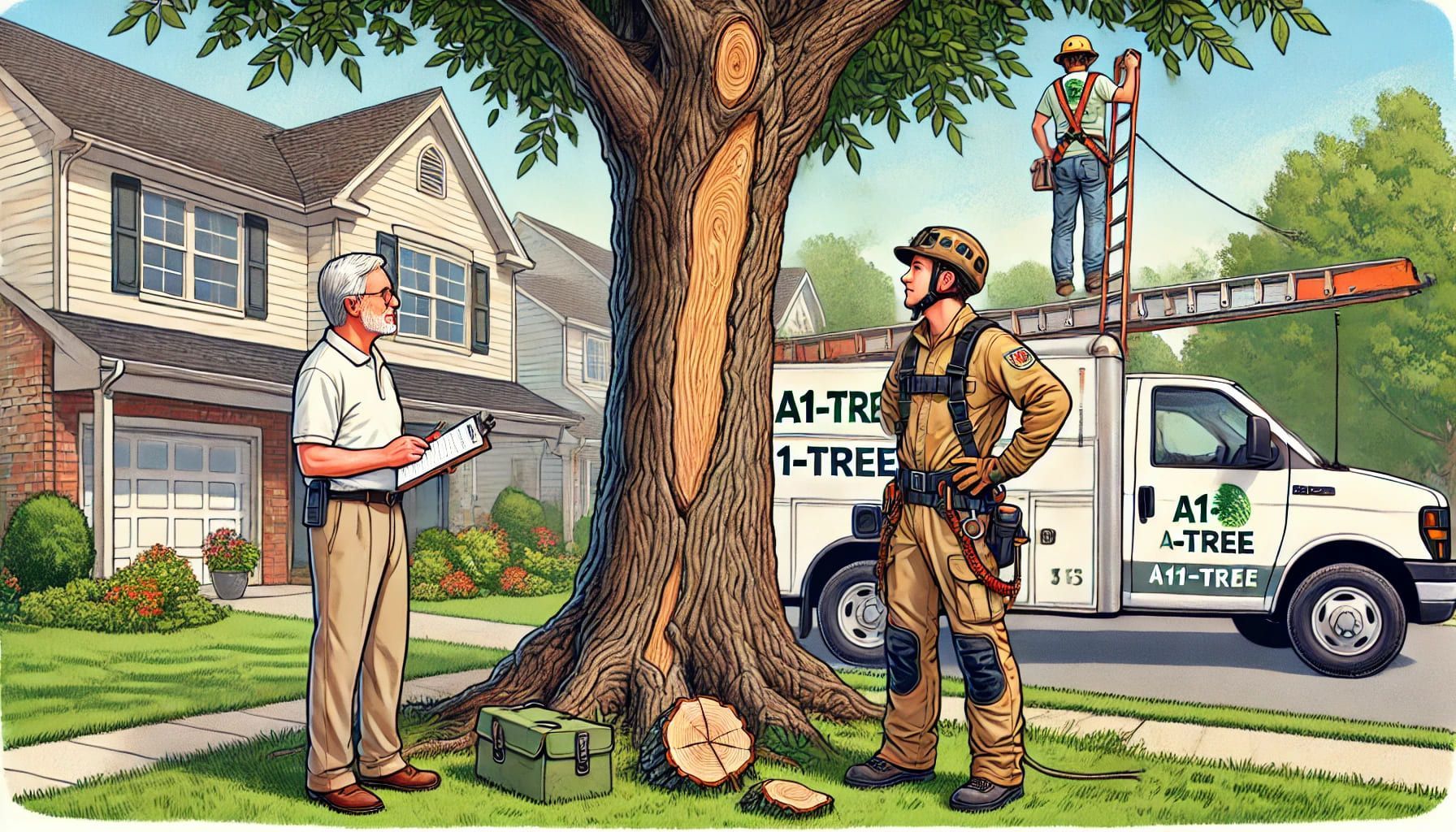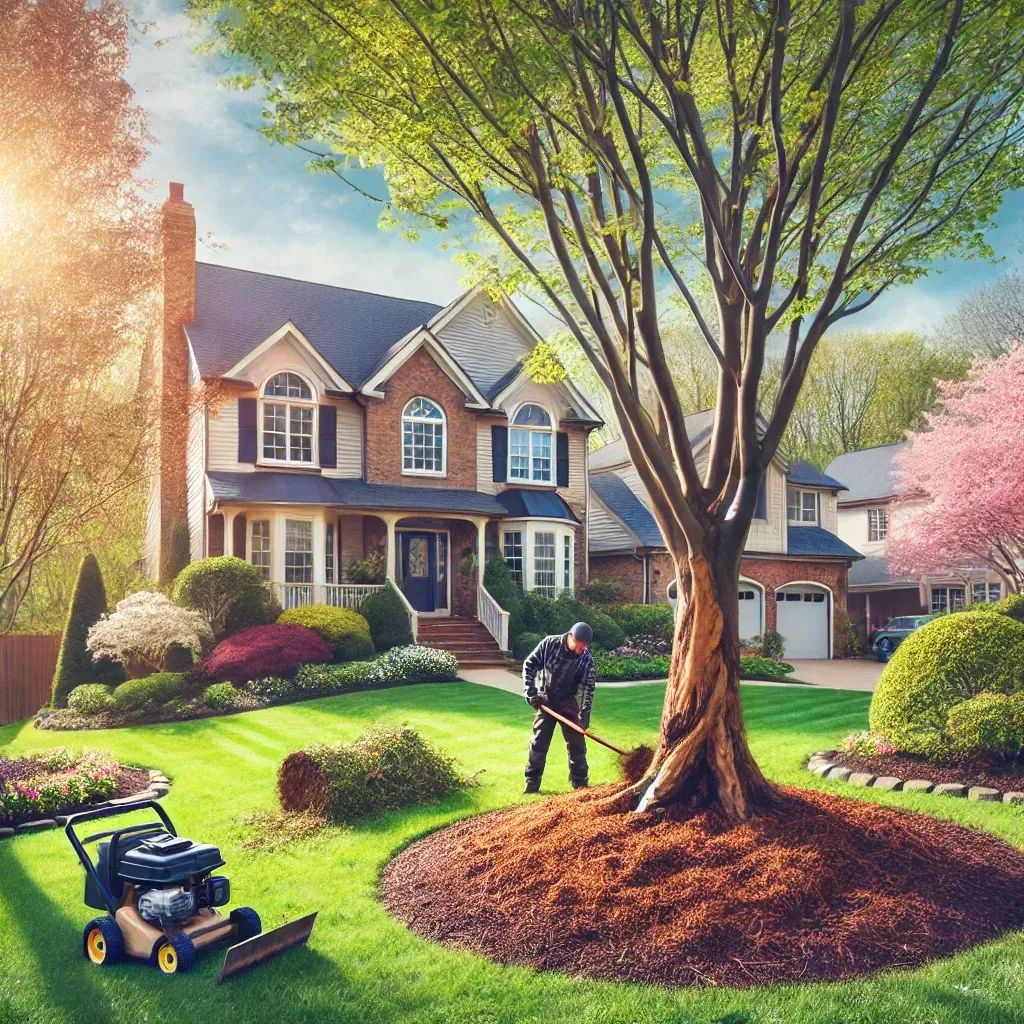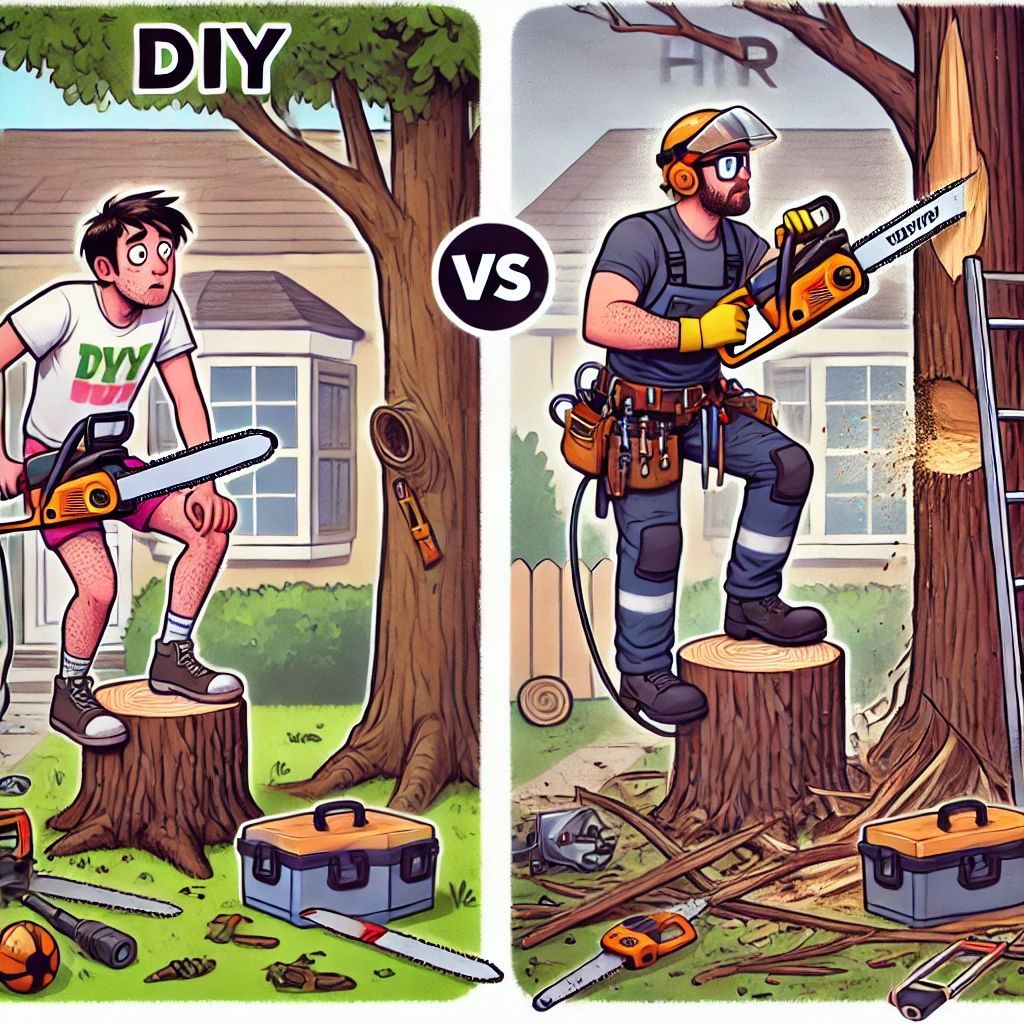CALL US OR TEXT US 443 831 1280
The Environmental Benefits of Tree Removal in Baltimore County

Tree Removal Can Help the Enviornment
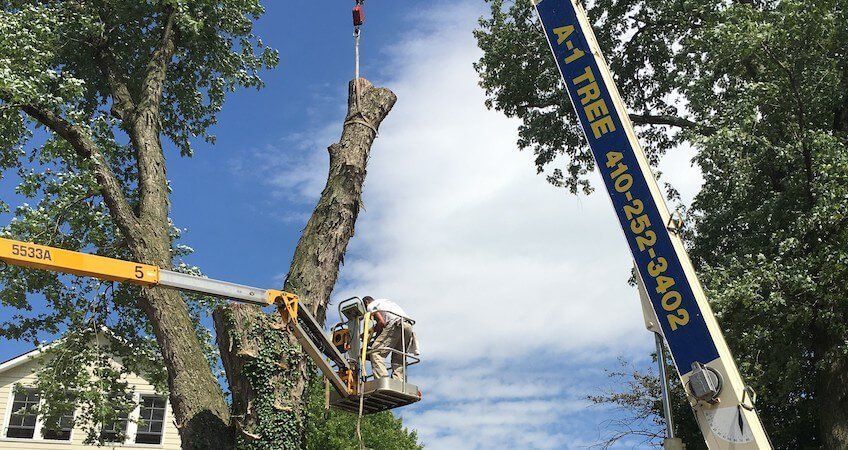
Trees play a crucial role in maintaining a healthy environment, but in some cases, tree removal can be beneficial. The environmental benefits of tree removal include improving biodiversity, preventing safety hazards, and maintaining a balanced ecosystem. For homeowners in Baltimore County, understanding when and why tree removal is necessary can help protect both their property and the environment.
This guide covers:
✅ When tree removal is necessary
✅ Local regulations in Baltimore County
✅ Environmental benefits of responsible tree removal
✅ Sustainable practices to minimize impact
Let’s dive in and explore what you need to know before deciding.
When is Tree Removal Necessary in Baltimore?
Tree removal is sometimes necessary in Baltimore to protect both the environment and your property. Diseased or infested trees can spread problems to nearby healthy trees, causing widespread damage. For example, the Emerald Ash Borer kills ash trees, Oak Wilt moves rapidly through root systems, and Bacterial Leaf Scorch weakens maples, elms, and sycamores. When a tree is beyond saving, removing it helps stop the spread of disease. In other cases, structural risks make removal the safest option.
Maryland’s storms can turn leaning or damaged trees into serious hazards, especially if they’re near homes, power lines, or roads. A falling tree can lead to expensive repairs or even cause power outages and fires. Those types of situations required storm damage cleanup.
Invasive or overcrowded trees can also be a problem. Species like Tree-of-Heaven and Norway Maple grow aggressively, choking out native trees and harming local wildlife. Removing these invaders allows native species to thrive, restoring balance to the ecosystem.
Lastly, tree roots can be just as destructive underground. Root damage to sidewalks, driveways, and sewer lines is a common issue for Baltimore County homeowners, often leading to costly repairs. By removing problem trees before the damage worsens, homeowners can avoid major headaches and expenses down the road.
1. Diseased Trees
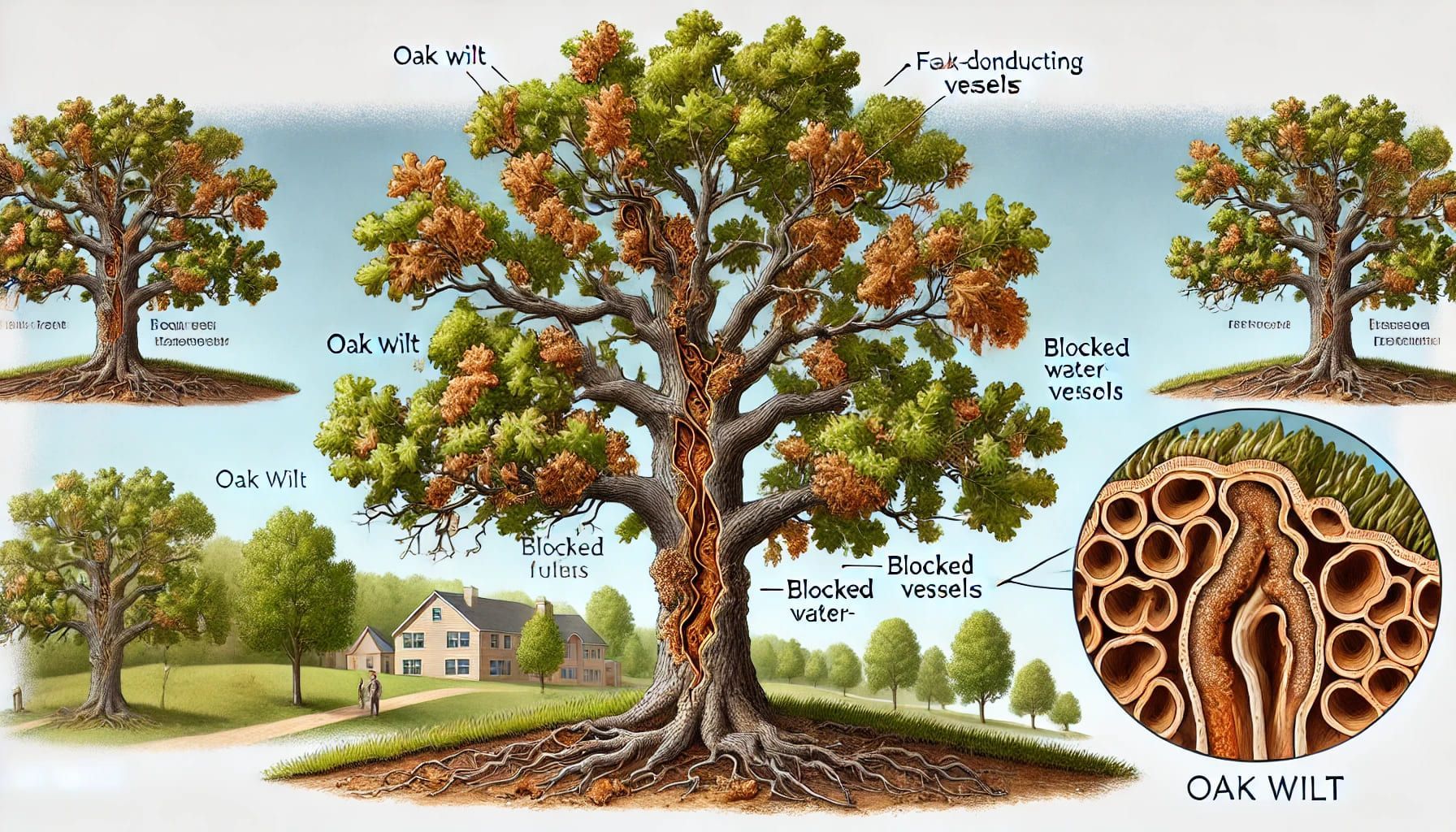
Maryland trees are vulnerable to various diseases that weaken their structure and threaten surrounding plant life. Oak Wilt spreads rapidly through root systems, cutting off nutrients and water, while Bacterial Leaf Scorch causes leaves to brown and die prematurely, affecting maples, elms, and sycamores. Once a tree is severely diseased, it becomes brittle and unstable, increasing the risk of falling branches or complete collapse. Diseased trees also weaken the local ecosystem by reducing habitat and food sources for wildlife. Removing a diseased tree helps prevent the spread of infection, protecting nearby healthy trees and maintaining a stable environment.
Maryland trees are prone to diseases and pests, including:
Emerald Ash Borer – A destructive pest that kills ash trees.
Oak Wilt – A fungal disease that spreads quickly among oak trees.
Bacterial Leaf Scorch – Affects maple, elm, and sycamore trees, leading to decline.
Why Removal is Important: Diseased trees can spread infections to nearby healthy trees, making removal the best course of action.
2. Infested Trees
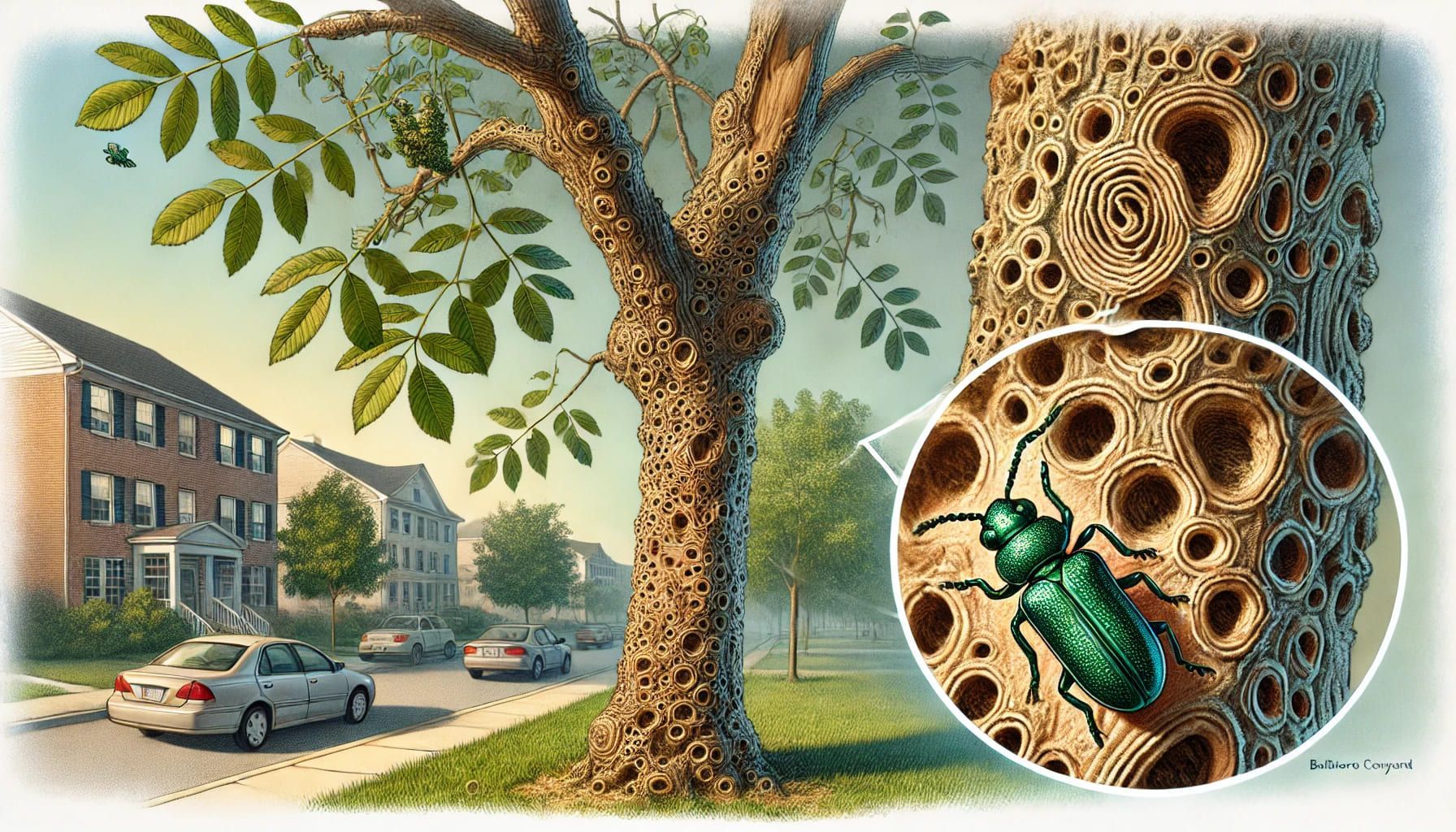
Pest infestations can be just as destructive as disease, often killing trees from the inside out. The Emerald Ash Borer, one of Maryland’s most damaging invasive pests, burrows beneath the bark of ash trees, cutting off their ability to transport water and nutrients. As a result, infested trees become weak, brittle, and dangerous. Infestations spread quickly, affecting entire neighborhoods and forests if left unchecked. Removing infested trees prevents the pests from spreading, protecting both urban and natural landscapes. Proper tree removal also allows space for pest-resistant or native tree species to thrive. 🌳
3. Structural Risks to Property & Power Lines
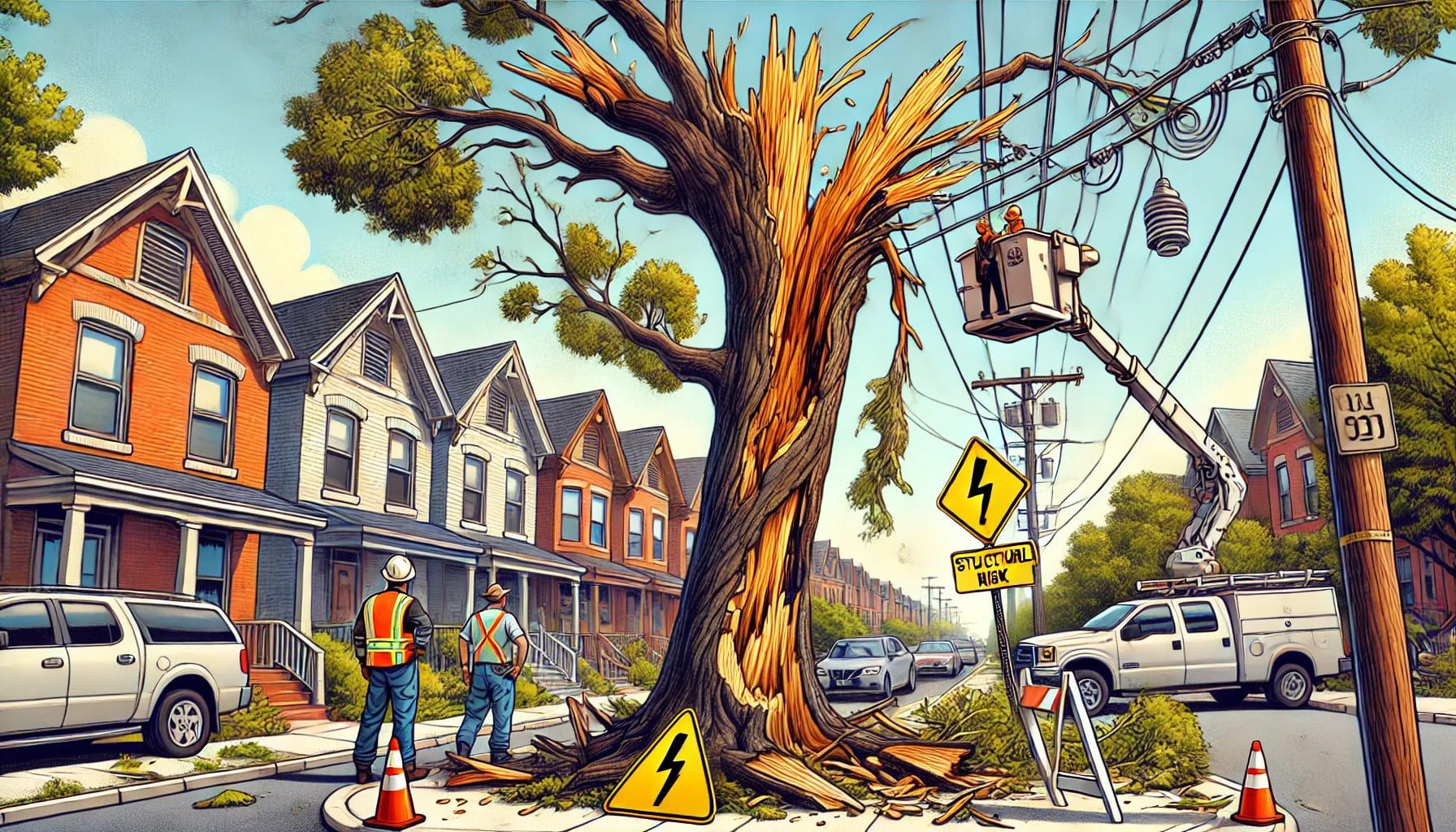
Dead, diseased, or overcrowded trees create dangerous conditions for wildfires by acting as fuel. While Maryland is not as wildfire-prone as the West Coast, dry conditions and dead vegetation can still contribute to fast-spreading fires. Removing deadwood and thinning out overgrown areas reduces the risk of fire ignition and spread. Tree removal also helps create natural firebreaks, which slow down wildfires and protect homes in wooded areas.
Why Removal is Important: Preventing tree-related property damage can save thousands on repairs and insurance claims.
4. Enhances Property Value & Curb Appeal
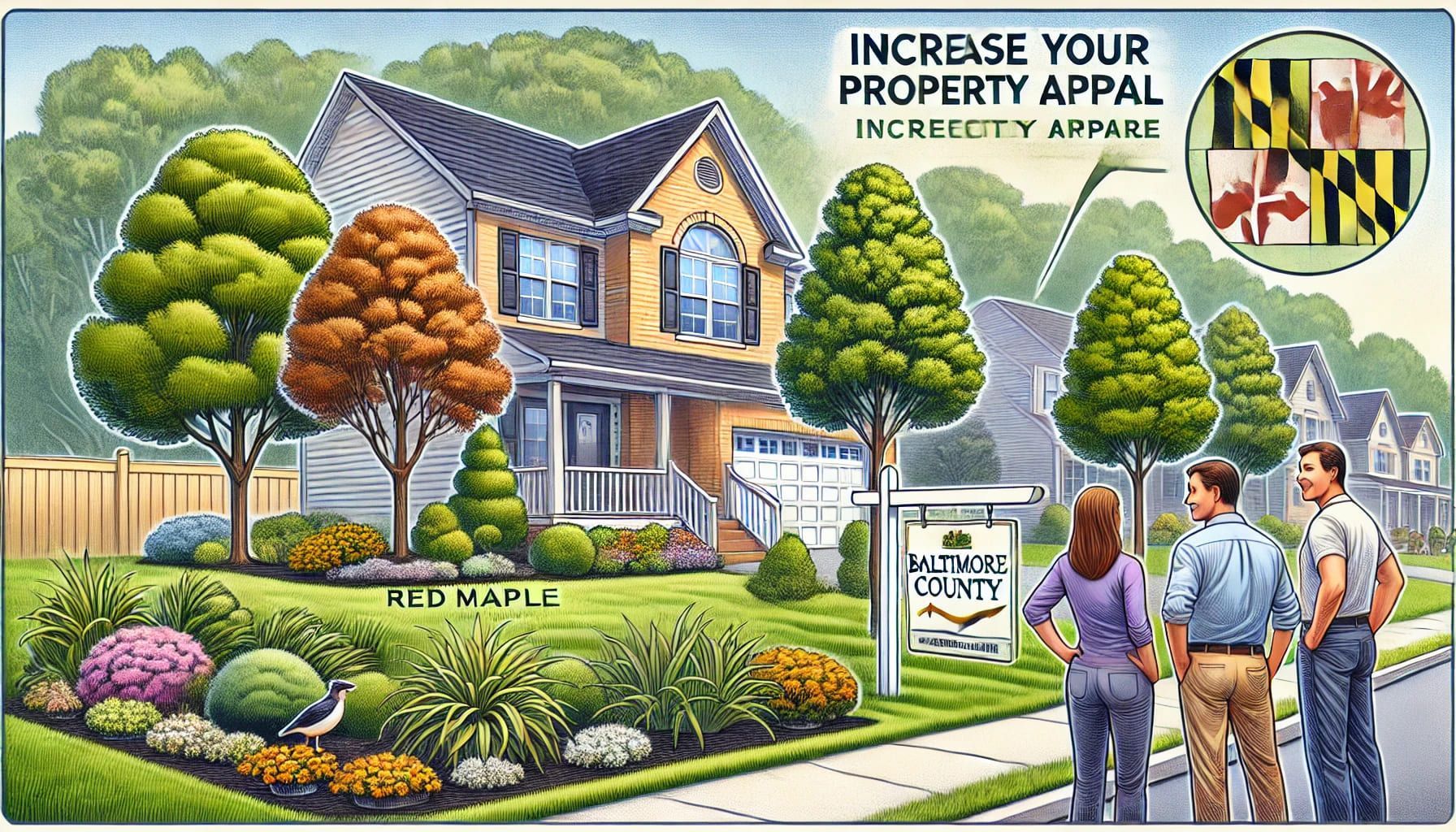
Invasive tree species harm the environment because they grow aggressively, out competing native trees for sunlight, water, and nutrients. Unlike native trees, invasive species often have no natural predators, allowing them to spread unchecked. This disrupts the local ecosystem by reducing biodiversity, making it harder for native plants, animals, and pollinators to survive.
Some invasive trees, like Tree-of-Heaven, even release chemicals into the soil that prevent other plants from growing. Over time, this leads to weaker forests, fewer food sources for wildlife, and increased soil erosion.
Some tree species are invasive in Baltimore County, meaning they are not native to the area.
Examples include:
- Tree-of-Heaven (Ailanthus altissima) – Known for rapid spread and disruption of local ecosystems.
- Norway Maple (Acer platinoids) – Crowds out native trees like Red Maples and Oaks.
Why Removal is Important: Removing these trees helps native species thrive, restoring ecological balance.
Want to learn more about invasive species?
Read this article.
5. Root Damage to Sidewalks & Sewer Lines
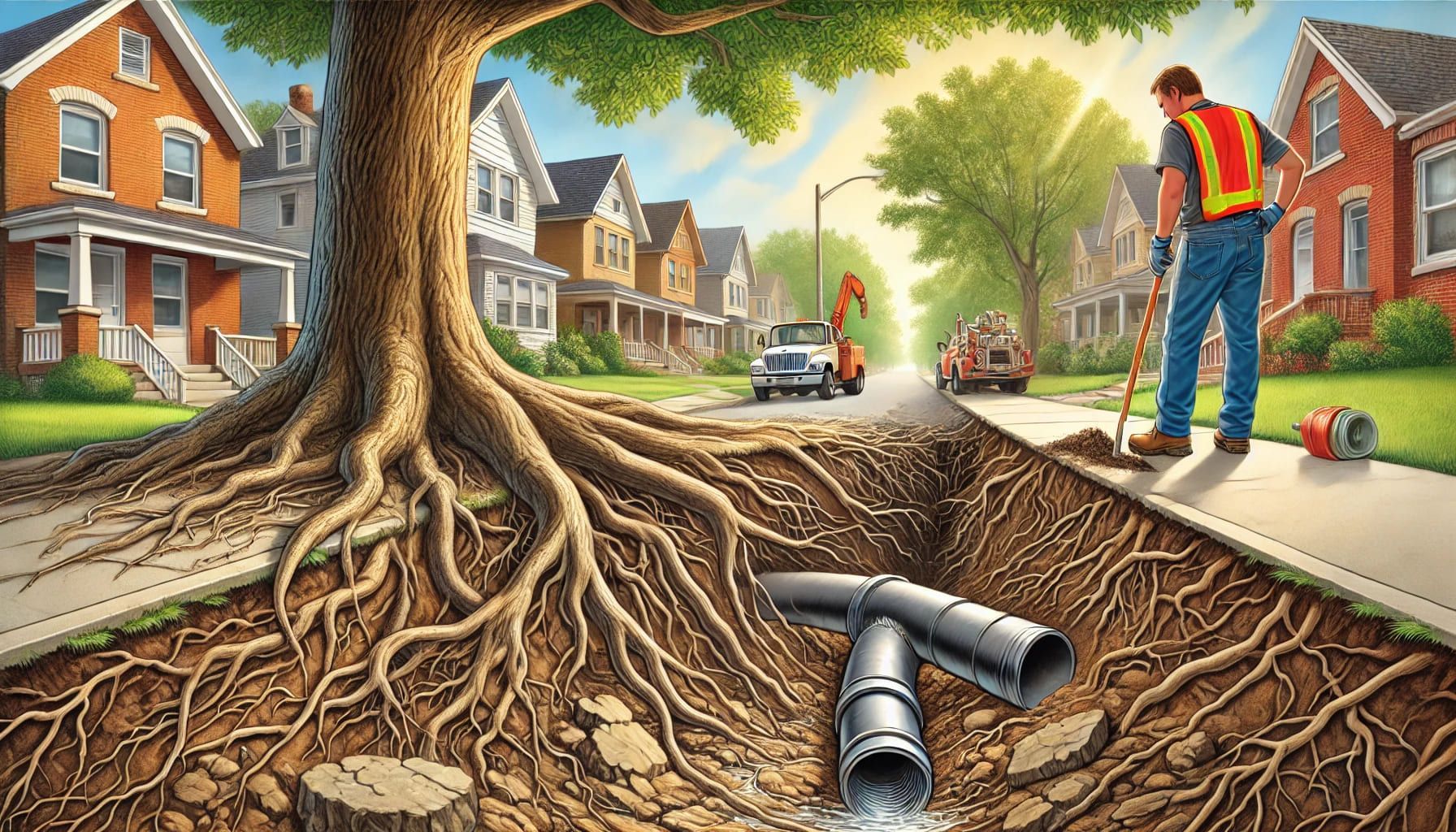
Tree roots can cause major structural problems by lifting sidewalks, cracking driveways, and damaging underground pipes and sewer lines. Over time, these issues lead to costly repairs and safety hazards for pedestrians. Preventative tree removal saves homeowners money by stopping these problems before they get worse. Additionally, removing problem trees reduces liability risks, especially for homeowners with trees near public walkways or shared spaces.
By carefully selecting which trees to remove and replacing them with environmentally friendly alternatives, homeowners can create safer, healthier landscapes while still enjoying the many benefits of trees.
By addressing these issues, homeowners can
prevent safety hazards, protect their property, and support a healthier environment
for their community.
Why Removal is Important: Prevents long-term damage and costly repairs.
Environmental Benefits of Tree Removal
How Responsible Tree Removal Benefits the Environment
1. Restores Ecosystem Health
Some trees harm the environment by crowding out native species, limiting sunlight, and using up essential nutrients. Invasive trees like Tree-of-Heaven and Norway Maple spread aggressively, preventing beneficial plants from growing. By removing these species, homeowners can restore balance to the ecosystem and create space for native trees like Red Oak and Sweet Bay Magnolia, which provide food and shelter for local wildlife. These trees support birds, pollinators, and beneficial insects, strengthening the entire ecosystem.
2. Prevents Soil Erosion & Protects Water Quality
Unstable trees with weak or shallow root systems don’t hold soil in place, leading to erosion and runoff. This is especially a problem in sloped areas or near rivers and streams, where excess soil can pollute water sources like the Patapsco River. Removing problem trees and replacing them with deep-rooted, native species helps stabilize the ground, preventing sediment from washing into waterways. Healthy tree roots filter pollutants and absorb excess rainwater, reducing flooding and improving water quality.
The Importance of Getting The Right Permits
1. Permits May Be Required
If a tree is located in a critical area, near a water body, or in a conservation zone, you may need official approval from the Baltimore County Department of Environmental Protection and Sustainability (DEPS) before removal. The county regulates tree removal in these areas to preserve natural landscapes, prevent flooding, and maintain biodiversity. Additionally, trees that are over 20 inches in diameter may require a permit to ensure that large, mature trees are not removed unnecessarily.
2. Why Permits Matter
Obtaining the proper permit isn’t just about following the law—it also helps ensure that tree removal is done safely and responsibly. Permits allow county officials to assess the environmental impact of removing a tree and, in some cases, may require the homeowner to plant a replacement tree. Removing a tree without the proper permits could result in fines, legal action, or even an order to replant trees at your own expense.
3. How to Check If You Need a Permit
To find out if a permit is required, homeowners should contact Baltimore County’s DEPS office or visit their website for updated regulations. It’s also a good idea to consult a licensed arborist who is familiar with local rules. By securing the necessary permit in advance, homeowners can avoid costly penalties and ensure that their tree removal project is legal, safe, and environmentally responsible. 🌳
What Makes Tree Removal Practices Sustainable?
Sustainable tree removal practices minimize environmental harm and ensure that trees continue to benefit the ecosystem, even after removal. Working with ISA-certified arborists helps guarantee that trees are only removed when necessary and in the safest, most responsible way. Instead of simply cutting down trees and discarding them, repurposing the wood for mulch, furniture, or firewood reduces waste and gives the material a second life. Additionally, planting native species like Red Maple, White Oak, or Eastern Hemlock helps restore balance to the local environment by providing food and shelter for wildlife. Regular tree inspections allow homeowners to identify problems early, preventing unnecessary removals and promoting long-term tree health.
Sustainable practices ensure tree removal is environmentally responsible:
- Work with ISA-Certified Arborists – They follow best practices for safety and sustainability.
- Replant Native Trees – Consider planting Red Maple, White Oak, or Eastern Hemlock.
- Repurpose the Wood – Use removed trees for mulch, furniture, or firewood.
- Schedule Regular Tree Inspections – Prevent issues before removal becomes necessary.
FAQs for Baltimore County Homeowners
Q: How do I know if my tree needs to be removed?
A: Signs include severe leaning, dead branches, fungal growth, and root damage. If unsure, consult an arborist.
Q: Will my homeowner's insurance cover tree removal?
A: Insurance may cover removal
if the tree is a threat (e.g., damaged in a storm), but not for preventive removal.
Q: Can I remove a tree near a sidewalk or street?
A: Trees on public property
may require a permit or approval from Baltimore County officials.
Q: What happens to the tree after removal?
A: Many companies
offer recycling options, such as wood chipping, mulch production, or furniture-making.

Our service Hours
Monday 07:00AM-07:00PM
Tuesday 07:00AM-07:00PM
Wednesday 07:00AM-07:00PM
Thursday 07:00AM-07:00PM
Friday 07:00AM-07:00PM
Saturday 07:00AM-07:00PM
Sunday 07:00AM-06:00PM
Contact us
Le responderemos tan pronto como sea posible.
Inténtelo de nuevo más tarde.
All Rights Reserved | Website Design by RJ Maven



